Ancient Round Coins Were Invented To Prevent Fraud
AncientPages.com - Have you ever wondered why coins are round? The answer can be found in historical records. There is a valid reason why our ancestors decided to produce round coins. It was the best way to prevent fraud.
Most ancient coins were round, but far from all. Ancient Chinese coins for example came in different shapes, and in Japan people used rectangular coins as well as round coins with a hole in the middle.
When and where the first coins were invented is still a matter of debate, but the first coins used as a method of payment appeared around the 6th or 5th century B.C.
Main coins of Tokugawa coinage. A large ovoid gold Koban, under it a small gold Ichibuban, top right a silver Ichibuban, under it a silver Isshuban and a bronze round "Kan'ei tsuho" Mon. Credit: Wikipedia
According to Greek historian Herotodus, first payment coins were produced in Lydia, an Iron Age kingdom in modern western Turkey. Aristotle on the other hand claimed that the first coins were minted by Demodike of Kyrme, the wife of King Midas of Phrygia.
What historians do know is that Lydians made their coins from a naturally occurring mixture of gold and silver called electrum. Lydian coins were oval-shaped and had a design on one side only. The other side was marked with simple punches.
See also:
Beer Was Used As Medicine And Payment In Ancient Egypt
Roman Consuls Seized Power Through Intimidation, Bribery And Show Business
Modern Banking Concept Started In Ancient Babylonian Temples
Ancient Greeks adopted the Lydians’ method and improved it by manufacturing coins that were almost completely round coins. This technology spread throughout the ancient world.
Ancient Romans quickly discovered all benefits of round coins. For one thing, such coins could be used as an efficient propaganda tool. People who lived in the outskirts of Rome were not always well-informed about political changed in the Roman Empire.
The most commonly used coin denominations and their relative sizes during Roman times. Credit: Wikipedia
When coins appeared with the new Emperor's portrait, people new the previous ruler had been replaced.
Round coins were also practical because their corners could not be removed. Cutting off precious metal and trying to trade the coin’s value was very difficult.
If an dishonest money handler was tempted to snip off a bit from the edge of each coin, rendering it less valuable, he would have problems. A round coin would reveal that sort of tampering better than any other shape, since it would have a flat edge where it was snipped.
So, producing round coins was a way of preventing fraud. If you are interested in the long history of money, Ancient Pages published a comprehensive article on the subject: Our Lives Have Always Been Manipulated By Money – Part 1 – 3
In the above mentioned article, we go back 4500 years in time and find that silver rods were the world’s first money. They were introduced in Mesopotamia. It was believed they would smooth the progress of trade.
Copyright © AncientPages.com All rights reserved. This material may not be published, broadcast, rewritten or redistributed in whole or part without the express written permission of AncientPages.com
More From Ancient Pages
-
 Pamola: Mighty Thunderbird In Myths Of Penobscot People Of Maine
Featured Stories | Apr 25, 2019
Pamola: Mighty Thunderbird In Myths Of Penobscot People Of Maine
Featured Stories | Apr 25, 2019 -
 Ancient Health Center Discovered In Philadelphia, Central Anatolia, Turkey
Archaeology | Apr 22, 2016
Ancient Health Center Discovered In Philadelphia, Central Anatolia, Turkey
Archaeology | Apr 22, 2016 -
 Has The Mystery Of The Hobbits Finally Been Solved?
Archaeology | Apr 21, 2017
Has The Mystery Of The Hobbits Finally Been Solved?
Archaeology | Apr 21, 2017 -
 Viking Cemetery In Lutomiersk And DNA May Solve The Mystery Of Norse Warriors In Central Poland
Vikings | Jan 7, 2025
Viking Cemetery In Lutomiersk And DNA May Solve The Mystery Of Norse Warriors In Central Poland
Vikings | Jan 7, 2025 -
 Beads Show European Trade In African Interior Used Indigenous Routes
Archaeology | Sep 17, 2022
Beads Show European Trade In African Interior Used Indigenous Routes
Archaeology | Sep 17, 2022 -
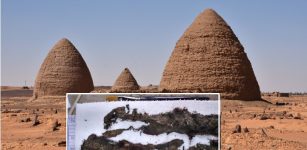 People Of Old Dongola Recycled And Dyed Clothes
Archaeology | Jan 24, 2024
People Of Old Dongola Recycled And Dyed Clothes
Archaeology | Jan 24, 2024 -
 What Is The Avoidance Custom Of The Amish People In Pennsylvania?
Ancient History Facts | Jul 29, 2019
What Is The Avoidance Custom Of The Amish People In Pennsylvania?
Ancient History Facts | Jul 29, 2019 -
 Huge Ancient Hydraulic System Built By The Liangzhu Culture May Be World’s Oldest And Predate Mesopotamian Water Systems
Ancient Technology | Dec 9, 2017
Huge Ancient Hydraulic System Built By The Liangzhu Culture May Be World’s Oldest And Predate Mesopotamian Water Systems
Ancient Technology | Dec 9, 2017 -
 Graves Of Celtic Princes Reveal How Powerful Women Were In Pre-Roman Germany
Archaeology | Jun 4, 2024
Graves Of Celtic Princes Reveal How Powerful Women Were In Pre-Roman Germany
Archaeology | Jun 4, 2024 -
 A 200-Year-Old Swedish Mystery Remains Unsolved
Ancient Mysteries | Oct 7, 2015
A 200-Year-Old Swedish Mystery Remains Unsolved
Ancient Mysteries | Oct 7, 2015 -
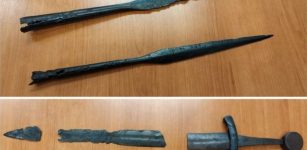 Swords And Spears Of The Yotvingians – A Long-Forgotten Ancient Warrior Culture Discovered In Poland
Archaeology | Jan 6, 2020
Swords And Spears Of The Yotvingians – A Long-Forgotten Ancient Warrior Culture Discovered In Poland
Archaeology | Jan 6, 2020 -
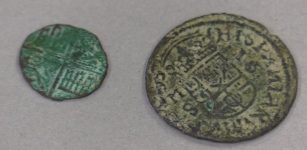 Ancient Roman Coins Discovered In Utah Could Re-Write History But Are They Authentic?
Archaeology | Apr 23, 2019
Ancient Roman Coins Discovered In Utah Could Re-Write History But Are They Authentic?
Archaeology | Apr 23, 2019 -
 LIDAR Will ‘Map’ The Ground Surface To Reveal New Picture Of Ancient Native American Culture
Archaeology | Aug 18, 2023
LIDAR Will ‘Map’ The Ground Surface To Reveal New Picture Of Ancient Native American Culture
Archaeology | Aug 18, 2023 -
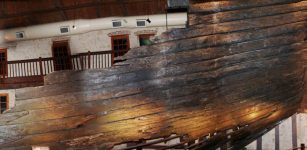 Batavia Shipwreck Reveals Secrets Of 17th-Century Dutch Seafaring Domination
Archaeology | Oct 30, 2021
Batavia Shipwreck Reveals Secrets Of 17th-Century Dutch Seafaring Domination
Archaeology | Oct 30, 2021 -
 Imhotep: Ancient Genius And Architect Of The Sakkara Pyramid
Featured Stories | Mar 7, 2016
Imhotep: Ancient Genius And Architect Of The Sakkara Pyramid
Featured Stories | Mar 7, 2016 -
 Ancient Cave Church Complex In Basarabi, Romania
Civilizations | Dec 11, 2018
Ancient Cave Church Complex In Basarabi, Romania
Civilizations | Dec 11, 2018 -
 Magnificent Ancient Egyptian Gold And Soapstone Jewelry Discovered At Tell El-Amarna Necropolis
Archaeology | Dec 18, 2022
Magnificent Ancient Egyptian Gold And Soapstone Jewelry Discovered At Tell El-Amarna Necropolis
Archaeology | Dec 18, 2022 -
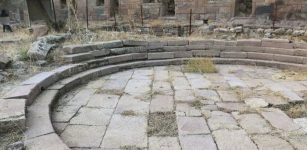 Meat And Fish Market Uncovered In Ancient City Of Aigai, Turkey
Archaeology | Nov 3, 2018
Meat And Fish Market Uncovered In Ancient City Of Aigai, Turkey
Archaeology | Nov 3, 2018 -
 Enigmatic, Grand Neolithic Dolmen Roche-aux-Fées Built By Fairies And Steeped In Aura Of Love And Hope
Featured Stories | Jan 9, 2025
Enigmatic, Grand Neolithic Dolmen Roche-aux-Fées Built By Fairies And Steeped In Aura Of Love And Hope
Featured Stories | Jan 9, 2025 -
 Patara Lighthouse Built By Emperor Nero In 64 AD Will Shine Again
Archaeology | Mar 5, 2020
Patara Lighthouse Built By Emperor Nero In 64 AD Will Shine Again
Archaeology | Mar 5, 2020



